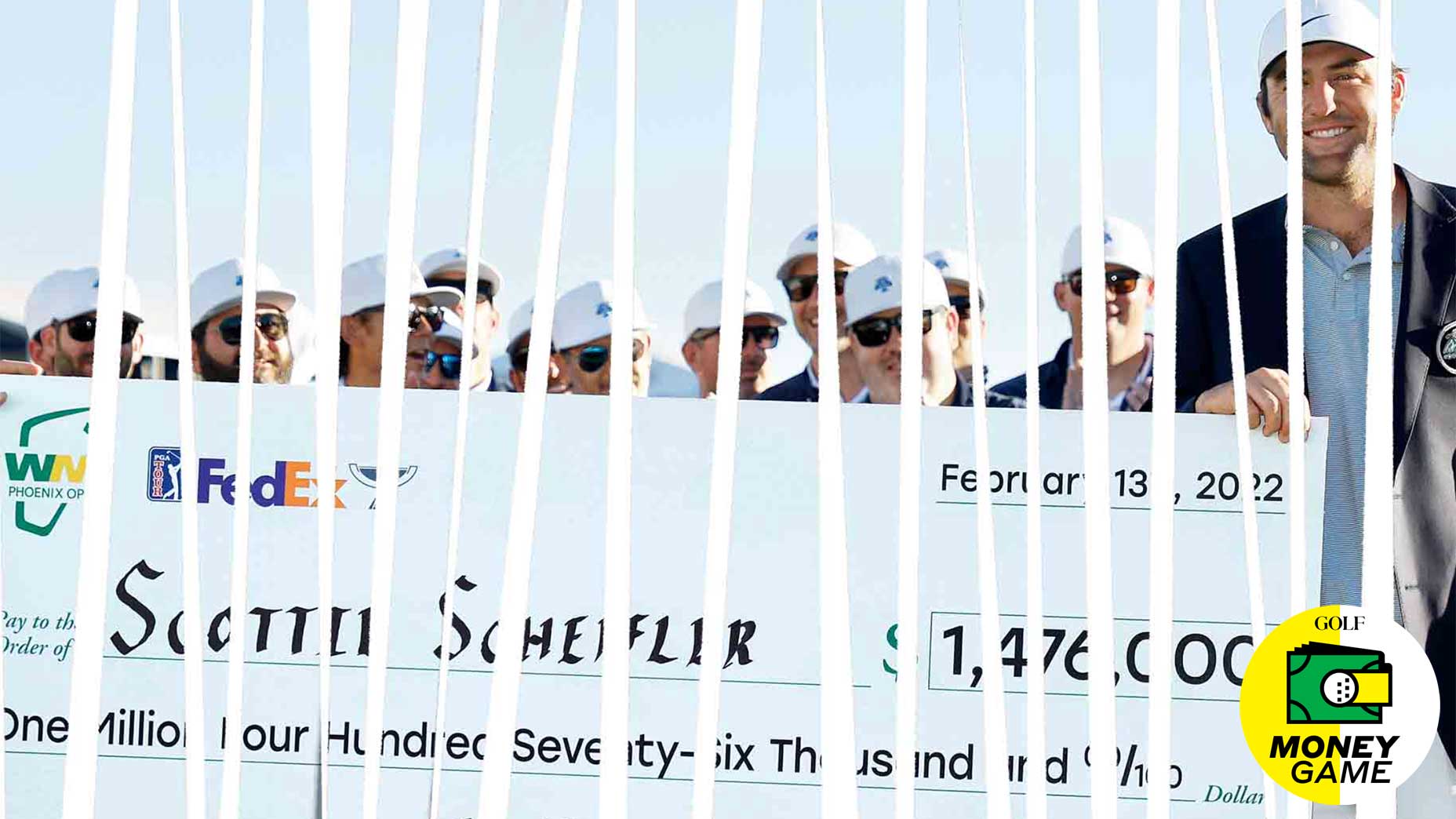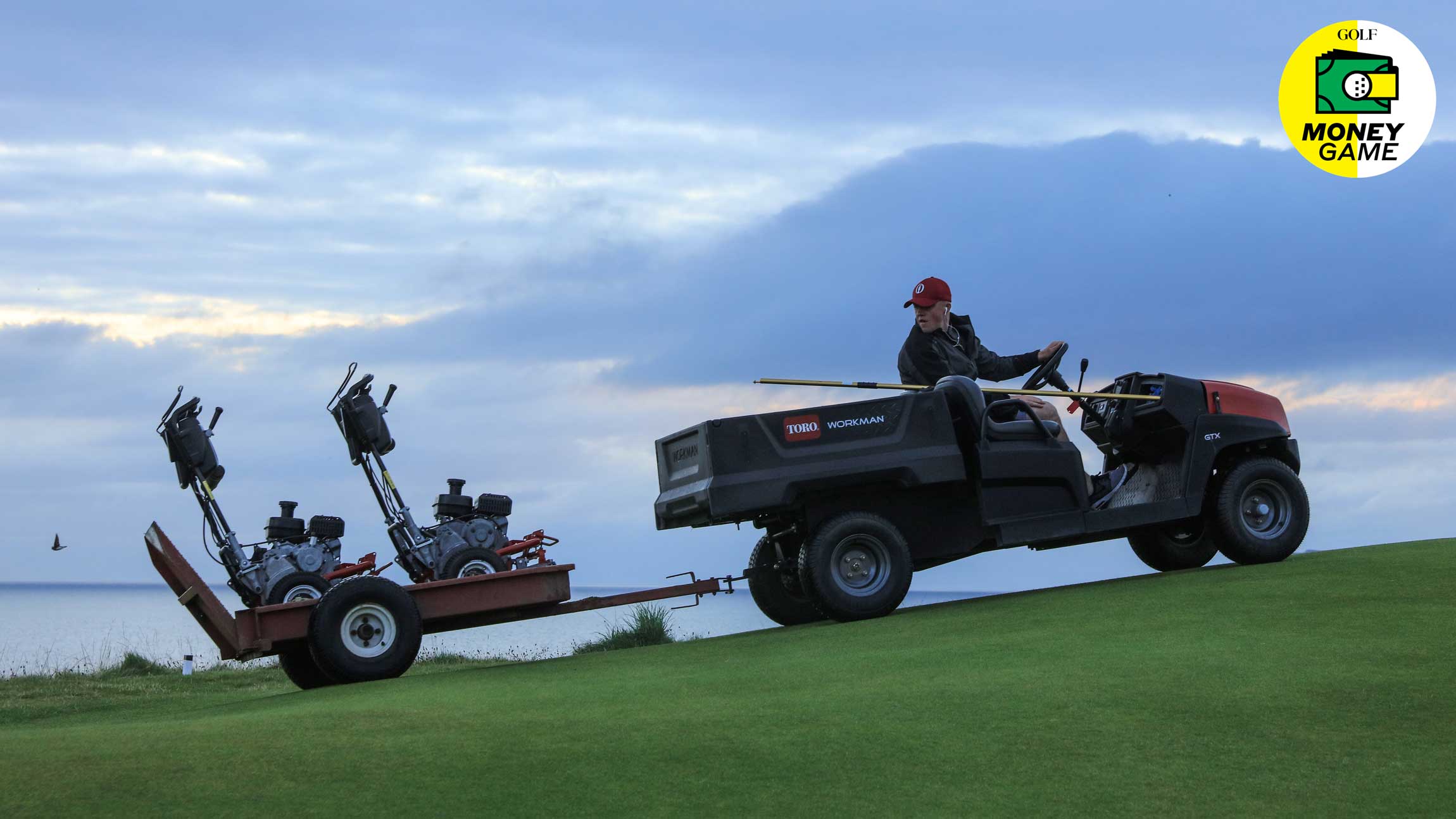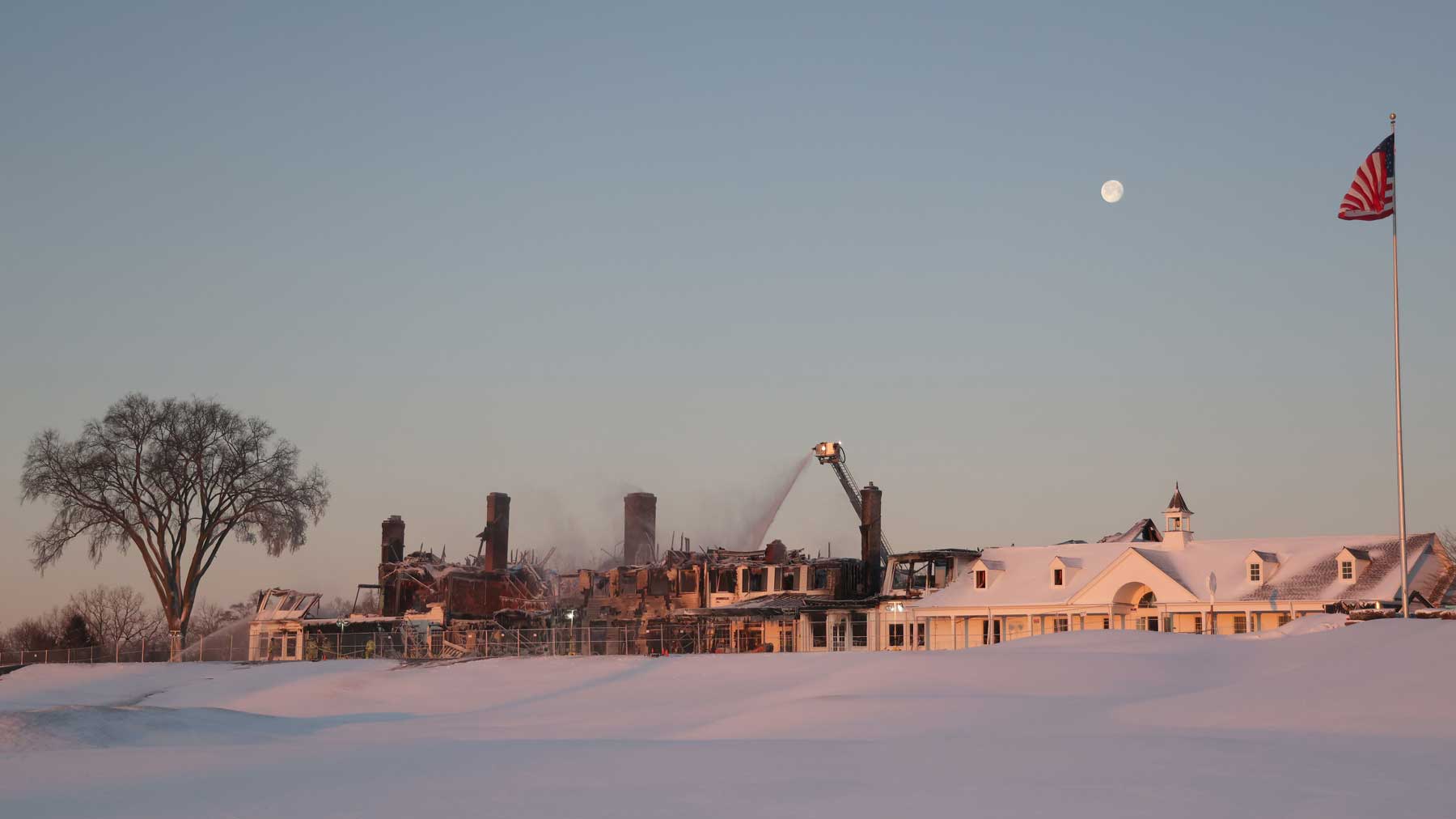As golfers, we complain about the course. Miss a putt and we instinctively touch the green, tamping down a raised ball mark that only our eye can see. Hit it wide off the fairway and we’re likely to comment on the consistency of the rough. Patchy. Burned out. Trampled down. Even if we get to play a U.S. Open–level course like Winged Foot, where the rough is thick and pristine, we’re likely to complain that it’s too thick! And then there are bunkers, where golfers are apt to note that the sand is different from hole to hole. Send it flying over the green? Not a bad swing — no sand in the bunker!
But what would it cost to maintain the course where all of our attributes as a golfer would shine? Alas, this isn’t a column about fantasy but about money and golf. The cost to achieve the condition players expect — or will tolerate — ranges from about $500,000 a year for a daily-fee course to $1,000,000 a year for a private club, estimates Bob Randquist, chief operating officer of the Golf Course Superintendent’s Association of America. But of course, it’s also about location, location, location. Hawaii is, on average, the most expensive state in which to maintain a course, at $1.44 million a year. That’s followed by tracks in the southwestern U.S., where the average yearly maintenance cost is $1.05 million. Because they have such a short season, courses in the north central states come in, on average, at a bargain $556,000.
Wherever it is you play, the labor to maintain a loop represents 50 to 60 percent of the total cost.
“Where are there savings to be had? That’s a question owners ask all the time,” says a weary Bryan Bielecki, vice president of agronomy at Billy Casper Golf, which manages nearly 150 golf courses in the U.S. “You can’t spend less and expect the same exact product. You have to sacrifice something.”
If costs, inevitably, are going to run so high, where is the money best spent? The greens. They are the most essential element of any course, but because of labor and equipment they are also the most expensive things to maintain — even if some of our demands are a costly waste. Firm and fast is the golf standard for greens. That’s achieved by mowing, rolling and hand-watering the greens to prevent them from burning out. It’s time-consuming and pricey.
Yet every foot of green speed on a stimpmeter slows play by seven minutes per group, says Adam Moeller, the director of the USGA’s greens section education committee. In other words, if your club has a mantra of playing a round in under four hours and 15 minutes, it might consider easing off the green speeds — and saving some money.
Lest this seem pedestrian, Moeller says that even the USGA slows its roll at championship venues. “Because of pace-of-play issues we have at our championships, we’ll sometimes slow the greens down,” he says. “We have so many golfers to get through, and we want to use challenging hole locations.”
Determining how often to cut the rough is, obviously, an important calculation when it comes to cost, but so too is how high you let it grow. The consensus is that any time the rough is thick and cut higher than three inches, play slows down. That hurts the bottom line.
How do private clubs, which carry a bigger tab, spend their money differently? More people and equipment. They might, for example, hire a horticulturist to handle the landscaping or a fleet of grounds-crew workers whose lone job is to fill fairway divots. Grooming the course of your dreams? That’s a dream-team scenario.
Every foot of green speed on a stimpmeter slows play by seven minutes per group.
Though it’s a public course, Pebble Beach is given the white-glove treatment, and it needs it. Typically, 60,000 rounds are played on it annually, in addition to three pro tournaments: the AT&T, the TaylorMade Pebble Beach Invitational and the PURE Insurance Championship. “It doesn’t slow down,” says Chris Dalhamer, the director of golf course maintenance at Pebble Beach. “Our biggest event is in February, which is one of our wettest months of the year. We have a staff that knows how to react in any situation.”
In preparation for last year’s United States Open, the fourth big event competed at Pebble in 2019, Dalhamer increased the grounds staff by six, for a total crew of 34. During tournament week he had added even more help — nearly 100 assistants and superintendents from top courses around the country.
“It makes it pretty neat to have these guys come in and assist us in whatever we want,” he says. “If it gets sunny and hot, we can send guys out on hoses.”
That guy spraying the green may be the head superintendent at the next U.S. Open venue, which goes a long way to explaining how perfection is achieved.
For clubs that don’t host U.S. Opens — and don’t charge $575 a round —there are ways to get by with less. Let the fairways grow and the ball roll slow! You may get to the 19th hole faster, too.
Have a query for us — on your personal (golf) finances, the economics of golf, or if jumbo winner’s checks are actually cashable — and our resident golf-and-finance whiz, Paul Sullivan, might just answer it in an upcoming mailbag column. Email your queries to him at moneymailbag@golf.com.











